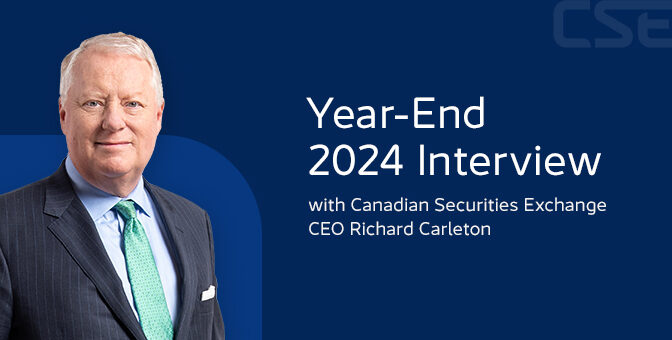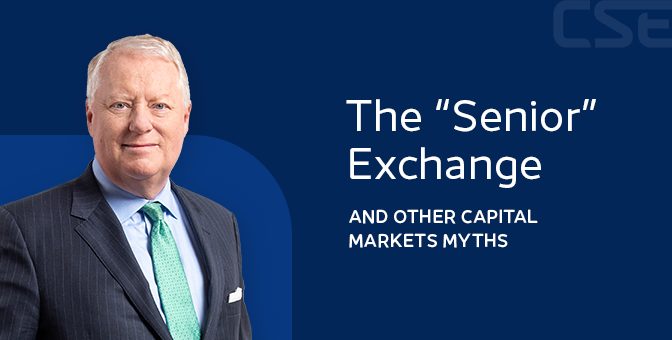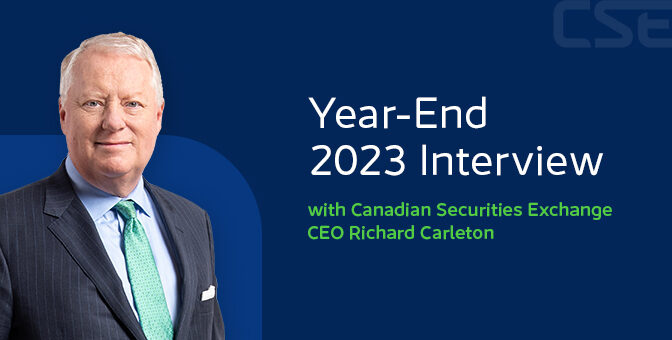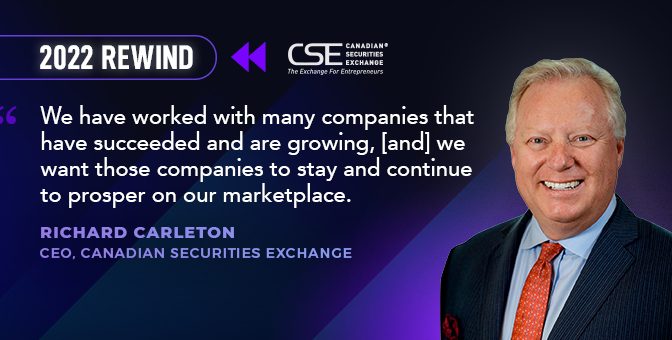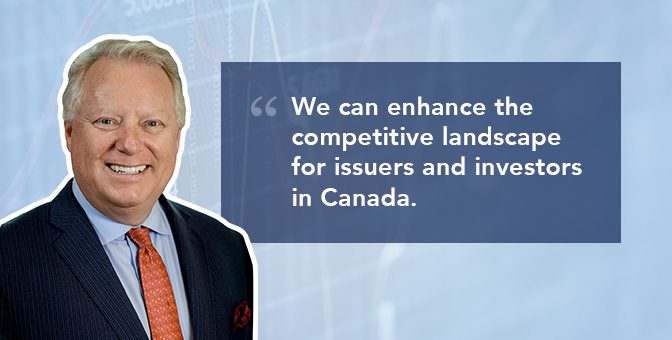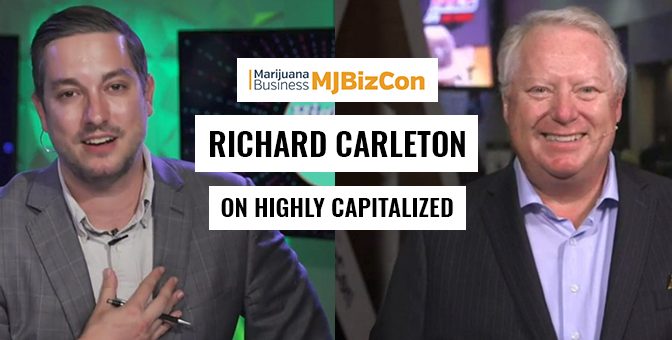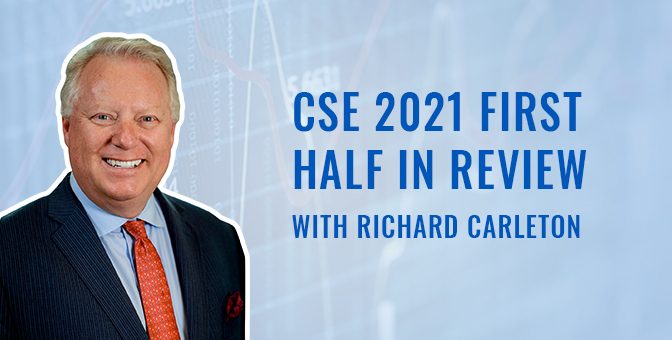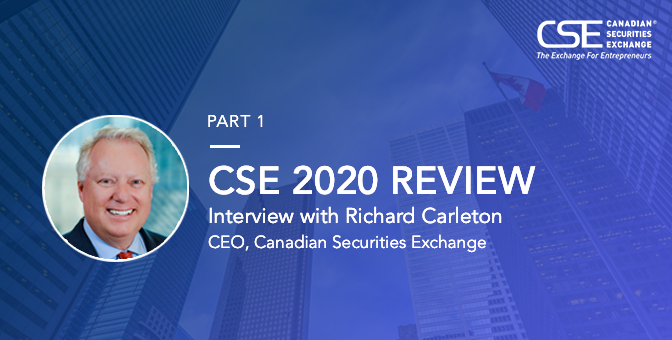One of the reasons financial markets never lose their vast audience is that they constantly evolve. Whether the change makes investors happy or not, there is always something new taking place, and one day is never the same as the next. It is a dynamic that was on full display once again in 2024.
Large-cap stocks remained strong, with broader indices setting dozens of daily closing records. And while not fully keeping pace, small-cap stocks finally caught a break in 2024, with those in the Canadian market benefiting from several months during which it seemed like gold was reaching a new all-time high every day. Retail trading staged a resurgence in the second half of the year, and institutional investors returning to the Canadian junior market became a frequent topic of conversation.
The Canadian Securities Exchange continued its evolution as well, and in May, celebrated its many successes over the 20 years since it became recognized as a stock exchange by the Ontario Securities Commission. The Exchange also undertook policy and other adjustments to business lines, joined an important global organization for exchanges, and went into the end of the year positioned to take advantage of renewed interest in cryptocurrencies and other digital assets.
With 2025 just around the corner, Richard Carleton, CEO of the CSE, shares his thoughts on Canadian market performance during 2024, the outlook for the year ahead, and previews important new initiatives that issuers and investors will surely want to watch.
In 2024, the CSE celebrated its 20th year as a recognized exchange. Issuers raised more than $26 billion in capital over the course of those two decades, and the CSE became one of the fastest-growing exchanges in the world. What does this milestone mean to you and to the broader CSE team, many of whom have been with the Exchange for a large part of their careers?
Our team takes a lot of pride in the success that the organization has experienced, and particularly in the last 10 to 12 years. It’s fair to say that the first 10 years were quite challenging, as we fought to become a meaningful part of the Canadian capital markets.
We are extremely pleased, not just with the achievements of the organization itself but those of CSE issuers as well. Companies have raised more than $26 billion through the facilities of the CSE, and being part of that means we have helped to foster the creation of new industries in Canada, the United States, and beyond.
The CSE has been part of several key investment themes over the last 10 to 15 years, whether it was the development of the cannabis industry in Canada and the U.S., or as is the case in the current market, the mining industry. The mining industry is vibrant, both in the so-called battery metals sector, which hopes to provide the needed materials to support the decarbonization of the economy as well as the precious metals group, which is riding the wave of record highs in the price of gold this year.
We’re very happy that we have made it this far, but our work isn’t done by a long shot. We look forward to continuing to help Canadian entrepreneurs, and entrepreneurs from around the world, tap into the Canadian public capital markets.
In June, the CSE announced that it had been recognized by the World Federation of Exchanges (WFE), the world’s foremost group for exchanges and clearing houses. What benefits do you anticipate membership will bring?
I’m actually just back from the annual meeting and general sessions of the World Federation of Exchanges in Kuala Lumpur, Malaysia, so I’ve had a chance to witness the organization operating first-hand.
Our move to join the WFE reflects the reality that a lot of our issuers are looking beyond Canada for capital. We see issuers going to the United States, the U.K., Europe, Australia, and South Asia for money. Raising money locally is a challenge in Canada.
As our issuers look beyond Canada, we need to be out there ahead of them to explain to local investors and investment funds that we are part of the Canadian capital markets framework, and one of the aspects of that is undergoing the process we did to become a member of the World Federation of Exchanges.
Our policies, procedures, and rules were vetted by three exchanges: the Warsaw Stock Exchange, B3 in Brazil, and the Johannesburg Stock Exchange, to ensure that we meet global standards for issuer regulation and investor protection. That provides overseas investors looking to trade or invest in companies listed on the CSE the assurance that we meet the standard that the WFE represents.
CSE issuers have been noticeably more active raising capital in 2024. Which industry sectors led the way, and have investors shifted priority with regard to the sectors they are most interested in?
As I mentioned before, the mining industry, and in particular precious metals exploration companies, have been the leaders in terms of the number of financings completed. They tend to be on the smaller side because the needs of early-stage exploration companies are certainly not the same as companies looking to do significant expansions, so they are not looking for hundreds of millions of dollars at one time.
We have also seen some interest in companies that have integrated artificial intelligence solutions into their product offerings. Of course, with the increase in the price of a number of cryptocurrencies over the last six to 12 months, a lot more interest has come back into the blockchain and crypto space.
The big numbers continue to come out of the cannabis sector, but in terms of the number of financings completed, it is the mining exploration group that is leading the way at this point.
Many market participants believe the second half of 2024 provided a more encouraging operating environment for smaller Canadian public companies than the first half. What were the factors behind this and how did they influence the broader operating environment for issuers and for the CSE itself?
I would say that it was the first three quarters that really weren’t very good, from either a trading or capital formation perspective. And I think it is fair to say – and I am not being controversial in any way – that the federal government’s approach to capital gains inclusion was a significant negative for companies looking to raise capital in Canada. I mentioned earlier that we are seeing our companies go out from Canada more and very much looking to the United States, in particular, for capital.
I don’t think there is any doubt that the decrease in interest rates beginning earlier this year helped fuel both the opportunity for companies to raise capital as well as secondary market trading activity. We were at a very low ebb for the first three quarters of the year, but recently there has been about a 50% jump in trading activity across Canada, and certainly, the CSE has more than done its part in contributing to this increase in activity. The interest rate picture is one aspect of it, and the volatility we have seen in the marketplace around the U.S. election and since has been a factor.
I hope it is sustainable into the new year, as it tends to be a leading indicator of more activity on the listings and capital formation front. As entrepreneurs see more trading activity, and thus more interest in the junior capital markets, they, and investors, are far more likely to support new companies coming into the market.
The CSE’s trading and data operations are closely related but also can be viewed as separate business lines. How has each performed in 2024?
People often ask about the relationships between the different business lines at the Canadian Securities Exchange, or any stock exchange. First and foremost, it begins with the issuers. If you don’t have interesting companies that are making progress toward achieving their goals, it is unlikely that people are going to trade the stocks or be interested in the market data related to those companies. So, where it really starts is having a group of companies that investors in Canada and beyond are interested in owning.
With that, as I mentioned earlier, trading levels on the CSE and other Canadian markets have been very low, and I mean levels that we have not seen since 2013 and 2014. It was a very challenging environment.
During that time, we made some changes to our market data policies. Effectively, we have increased some prices for the first time since 2016 in the market data segment. It was a significant bright spot for the results of the organization over the course of the year, and in fact, as the team worked to implement the new pricing and policies around connectivity and access to some of the Exchange’s services, we identified additional customers. As a result, the performance of the market data business has been very strong in 2024.
The CSE welcomed Rektron Group as its second Senior Tier issuer in 2024. What has the overall pace of new listings been? And how does the CSE’s new listings activity rank within the broader Canadian exchange landscape?
The pace of new listings has been quite slow. In fact, not since back into the earlier teen years of this century have we seen such low levels of activity. It has picked up somewhat but delistings over the course of the year exceeded the number of new issuers we welcomed. Unfortunately, we are in a position in the business cycle where the overall number of companies listed on the Exchange at the end of the year will be smaller than what we started with.
That said, we have seen a pickup in activity, particularly since September. Over the last two quarters, we have been listing about half of the companies coming to market in Canada, which is close to historic norms. Perhaps we did a little better in 2022, and particularly in 2021. But, as I say, I am encouraged that we are seeing an increase in the number of companies coming in, and more importantly, an increase in the number of applications that our team is receiving, indicating that we should see a little bit of strength in the new year.
It is clear from CSE press releases that the Exchange’s team has been on the road quite a bit in 2024, attending conferences and meeting foreign executives and industry leaders. The United States seems to be a particular focus. Can you discuss the strategy for international outreach at the CSE?
One of the things people need to appreciate is that a Canadian reporting issuer can access the same prospectus-exempt capital formation techniques that a U.S. reporting issuer can use in the United States. What that means is that without becoming a company that is a reporting issuer with the SEC or listing on Nasdaq or the New York Stock Exchange, you can actually do private placements in the U.S. with U.S. investors using only your Canadian Securities Exchange listing. And the same is true for the other Canadian exchanges.
Given that the U.S. is the largest capital market in the world by a substantial margin – I believe the number is currently something like 62% of the world’s equity market capitalization – it means companies listed on the CSE have a tremendous opportunity to raise money in the U.S. without the significant additional cost that would be undertaken if they were to list on one of the national market system exchanges there.
That has definitely become a real focus for us. As I say, things have been a little tough in Canada over the past year and a half, whereas the U.S. markets have been significantly more robust. There is more risk capital available in the U.S. for entrepreneurs as well. U.S. investors are very interested in the battery metals and the energy metals, and they have been supporting that investment theme for the last two or three years.
But our companies have also gone further offshore. For example, companies in the gold exploration sector, in particular, have always attracted a strong following from Germany and Switzerland. We see our issuers going there for capital formation, as well as to engage in investor relations roadshows and other activities. Many also ensure that their website and continuous disclosure materials are available in the German language.
So, again, that means that we have to be there making sure that local investors understand who the Canadian Securities Exchange is, that we are a material and meaningful part of the Canadian exchange landscape, and that they are not assuming additional risk by investing in a CSE company versus one that is listed on another Canadian exchange.
Bitcoin’s price is near a record high as we head into the end of the year. Does this signal anything about the potential for change in how capital markets operate? Are there businesses that the financial community should be taking a closer look at?
That’s an interesting question because it appears that Bitcoin and other cryptocurrencies are here to stay. And what we increasingly are seeing is those markets being pushed by the regulators in many respects to use the framework and structures that are familiar to those of us in the equity world. So, whether that is the idea that participants in these markets should be members of self-regulatory organizations like the Canadian Investment Regulatory Organization (CIRO) in Canada or that the instruments themselves should be considered securities and the distribution of those securities be done in accordance with the existing securities legal framework, there is an understanding that as these instruments become more mainstream, the traditional finance infrastructure is going to take care of a lot of the concerns people have had about participating in those markets.
It may not mean that they are listed on an exchange, but certainly that there is organized clearing and settlement and that there are regulated parties working in the space in an attempt to reduce some of the criminal aspects that we have seen with some of the companies involved in the crypto space.
As time goes on, it is likely we will see more use of tokenization or digitization of securities and utilization of some of the technologies fundamental to cryptocurrencies to facilitate clearing, settlement, and other processes underlying securities trading in North America.
It has taken a little longer than I thought it would – we were talking about this four or five years ago – but my sense is that progress continues. I think we will see some interesting initiatives in 2025.
In August, the CSE announced approval to introduce a market-on-close (MOC) facility designed to concentrate liquidity, reduce volatility, and enhance execution sizes at the close of trade each day. It comes in reaction to increasing fragmentation of trading activity across a growing number of execution venues. Can you talk about the MOC framework and its importance?
The market-on-close framework is complicated and I don’t expect people to go into the nuts and bolts of how it operates. Basically, the reason we are launching a market-on-close facility is to ensure that entities managing certain types of products, particularly exchange-traded products such as ETFs with CSE companies in them, have the opportunity to manage them in a way that ensures the tightest tracking of their portfolio to the underlying cash market.
This is a critical piece of infrastructure that we need to have in place for the CSE to both have ETFs listed on the Exchange and to make sure that our issuers have the opportunity to be in more ETFs, whether they are listed on the CSE or elsewhere. That is really the motivation – to support our move in 2025 into the ETF listing space.
What other plans does the CSE have for 2025? Can the financial community expect anything else new or different next year in the CSE marketplace and how the Exchange operates?
I’ve telegraphed that we expect ETFs containing CSE issuers to list on the Exchange at some point over the course of 2025. We think it is a great initiative because it will improve liquidity for component companies and increase the visibility of those companies as manufacturers of the ETFs market them to investors. We think there will be real interest from our issuers in wanting to be part of those ETF products, and we will be partnering with a variety of entities to bring them to market. So, this is certainly a big development that investors can anticipate next year.
We are looking to make some further adjustments to our pricing on the trading side with a view to ensure we can cut trading costs for the dealer community as much as possible, while promoting liquidity for companies listed on the Exchange or other-market securities that also trade on the CSE. We made some minor adjustments in October that led to a doubling of market activity in TSX and TSX-Venture stocks traded on the CSE. We think there is more to come in that direction as well.
And while I think it might be premature to go into detail, the Exchange has made some outside investments over the last few years. We are particularly interested in Tetra Trust, which is Canada’s first and leading custodian for digital assets. At this point, it is providing custody services for a number of Canadian and international financial institutions in Bitcoin, Ethereum, and other cryptocurrencies.
We believe there are more services that Tetra Trust can provide to support the continued development of digital assets, in particular, to make access to trading services for those instruments more widely available to retail accounts, particularly through the traditional brokerage community. I think we will see some interesting developments in that regard next year.

